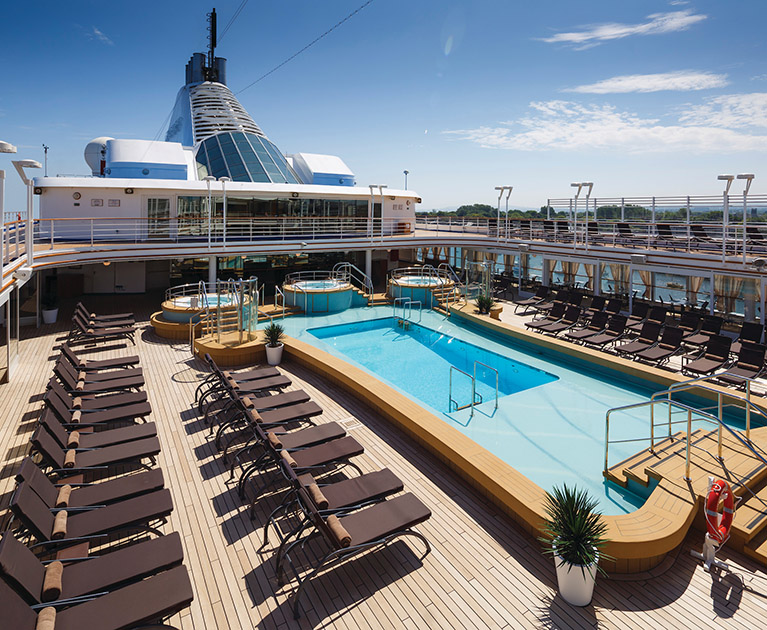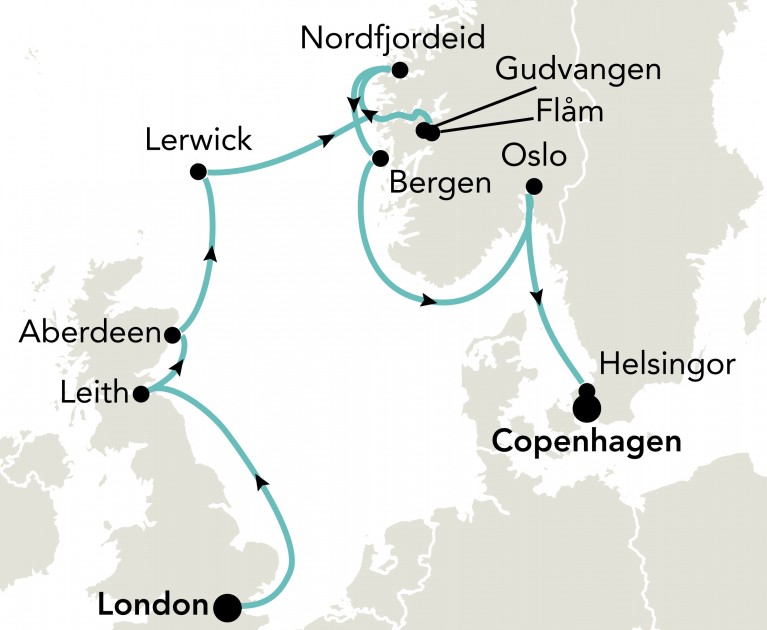



More about the bonus:
About 8 miles downstream—which means seaward, to the east—from central London, Greenwich is a small borough that looms large across the world. Once the seat of British naval power, it is not only home to the Old Royal Observatory, which measures time for our entire planet, but also the Greenwich Meridian, which divides the world into two—you can stand astride it with one foot in either hemisphere. Bear in mind that the journey to Greenwich is an event in itself. In a rush, you can take the driverless DLR train—but many opt for arriving by boat along the Thames. This way, you glide past famous sights on the London skyline (there’s a guaranteed spine chill on passing the Tower) and ever-changing docklands, and there’s usually a chirpy Cock-er-ney navigator enlivening the journey with his fun commentary. A visit to Greenwich feels like a trip to a rather elegant seaside town—albeit one with more than its fair share of historic sites
Edinburgh is to London as poetry is to prose, as Charlotte Brontë once wrote. One of the world’s stateliest cities and proudest capitals, it’s built—like Rome—on seven hills, making it a striking backdrop for the ancient pageant of history. In a skyline of sheer drama, Edinburgh Castle watches over the capital city, frowning down on Princes Street’s glamour and glitz. But despite its rich past, the city’s famous festivals, excellent museums and galleries, as well as the modern Scottish Parliament, are reminders that Edinburgh has its feet firmly in the 21st century. Nearly everywhere in Edinburgh (the burgh is always pronounced burra in Scotland), there are spectacular buildings, whose Doric, Ionic, and Corinthian pillars add touches of neoclassical grandeur to the largely Presbyterian backdrop. Large gardens are a strong feature of central Edinburgh, where the city council is one of the most stridently conservationists in Europe.
With close to 220,000 inhabitants, Aberdeen is Scotland’s third most populous city. Locally quarried grey granite was used during the mid-18th to mid-20th centuries for many of Aberdeen’s buildings, and hence the nicknames it has earned as the Granite City, or the Grey City. Aberdeen granite was also used to build the terraces of the Houses of Parliament and Waterloo Bridge in London. Since the discovery of North Sea oil in the 1970s, Aberdeen has also been called the Oil Capital of Europe or the Energy Capital of Europe. It is no wonder that because of the oil fields in the North Sea, Aberdeen’s seaport is very important. The Heliport with its flights to the oil fields is one of the busiest commercial heliports in the world.
Founded by Dutch fishermen in the 17th century, Lerwick today is a busy town and administrative centre. Handsome stone buildings—known as lodberries—line the harbour; they provided loading bays for goods, some of them illegal. The town’s twisting flagstone lanes and harbour once heaved with activity, and Lerwick is still an active port today. This is also where most visitors to Shetland dock, spilling out of cruise ships, allowing passengers to walk around the town.
If we haven’t said it already, Norway’s luxury is its sheer natural beauty. And at the very top of the pile is the all-inclusive Flam, a destination that is home to Glacial waterways lined by evergreen forests amidst jagged mountains and sheer cliff walls. Situated inland, on the arm of the 204-kilometre Sognefjord, the village has just 400 inhabitants. Its little size does not belie its gigantic heart, and Flam’s expansive loveliness knows no bounds. In fact, UNESCO has dedicated the Sognefjord as a World Heritage Site for its exquisite natural beauty. There are many ways to imbibe in the beauty of this destination. Some of the more peaceful among you will enjoy just drinking it all in from the veranda or deck of your ship, while adrenaline bunnies will most probably want to jump in a Zodiac and gain first-hand experience that way.
On an arm of Sognefjord, Gudvangen is at the foot of steep cliffs soaring 5,500 feet above the water’s surface and plunging deep to form one of the region’s deepest fjord basins. Snow-capped mountains, green cliffs, and veils of tumbling waterfalls characterize the vertical landscape on the approach to Gudvangen. The fjord is so narrow in places that during winter the sun can’t reach the valley floor. Mystical Gudvangen is the site of white caves and medieval stave churches. Standing sentinel over the ornate entrances to the venerable wooden sanctuaries are visages of fierce trolls and dragons, carved by long-dead Viking craftsman from the region. Cruise passengers are brought ashore by tender at one of two small piers, which are both in the center of town.
Many visitors fall in love with Bergen, Norway’s second-largest city, at first sight. Seven rounded lush mountains, pastel wood houses, the historic wharf, winding cobblestone streets, and Hanseatic relics all make it a place of enchantment. Its many epithets include “Trebyen” (Wooden City), “Regnbyen” (Rainy City, due to its 240 days of rain a year), and “Fjordbyen” (gateway to the fjords). Surrounded by forested mountains and fjords, it’s only natural that most Bergensers feel at home either on the mountains (skiing, hiking, walking, or at their cabins) or at sea (fishing and boating). As for the rainy weather, most visitors quickly learn the necessity of rain jackets and umbrellas. Residents take legendary pride in their city and its luminaries. The composer Edvard Grieg, the violinist Ole Bull, and Ludvig Holberg, Scandinavia’s answer to Molière, all made great contributions to Norwegian culture.
Warnemünde, officially a suburb of Rostock, is a quaint seaside resort town with the best hotels and restaurants in the area, as well as 20 km (12 miles) of beautiful white-sand beach. It’s been a popular summer getaway for families in eastern Germany for years.There is little to do in Warnemünde except relax, and the town excels brilliantly at that. However, Warnemünde is a major cruise-ship terminal. Whenever there is more than one ship at dock, the town explodes with a county fair–like atmosphere, and shops and restaurants stay open until the ships leave at midnight. The city celebrates the dreifache Anlauf, when three ships dock simultaneously, with fireworks.
What sets Oslo apart from other European cities is not so much its cultural traditions or its internationally renowned museums as its simply stunning natural beauty. How many world capitals have subway service to the forest, or lakes and hiking trails within city limits? But Norwegians will be quick to remind you that Oslo is a cosmopolitan metropolis with prosperous businesses and a thriving nightlife. Once overlooked by travellers to Scandinavia, Oslo is now a major tourist destination and the gateway to what many believe is Scandinavia’s most scenic country. That’s just one more change for this town of 650,000—a place that has become good at survival and rebirth throughout its 1,000-year history. In 1348 a plague wiped out half the city’s population. In 1624 a fire burned almost the whole of Oslo to the ground. It was redesigned and renamed Christiania by Denmark’s royal builder, King Christian IV.
Gateway to the Baltic Sea, Helsingør is seafaring history is at its finest. But, it is perhaps it is Helsingør’s artistic, notably literary, history that has made it famous. For right in the centre of the pretty Danish town is Kronborg Castle, a.k.a. Hamlet’s castle. One of the many mysteries surrounding the English bard, whether he actually visited Kronborg Castle remains uncertain but just adds to the romance of the town. In Hamlet, Shakespeare called Kronborg Castle Elsinore, which has now become the English name for Helsi
ngør – in any case, there is no mystery as to why UNESCO added the castle onto its World Heritage list in 2000! Just one hour north of Copenhagen, the town is a lovely fusion of historic and modern, maritime and urban.
The Kingdom of Denmark is the geographical link between Scandinavia and Europe. Half-timber villages and tidy farms rub shoulders with towns and a few cities, where pedestrians set the pace, not traffic. In the capital, Copenhagen—København in Danish—mothers safely park baby carriages outside bakeries while outdoor cafés fill with cappuccino-sippers, and lanky Danes pedal to work in lanes thick with bicycle traffic. The town was a fishing colony until 1157, when Valdemar the Great gave it to Bishop Absalon, who built a castle on the site of what is now the parliament, Christiansborg. It grew as a centre on the Baltic trade route and became known as købmændenes havn (merchants’ harbour) and eventually København.In the 15th century, it became the royal residence and the capital of Norway and Sweden.
From 1596 to 1648 Christian IV, a Renaissance king obsessed with fine architecture, began a building boom that crowned the city with towers and castles, many of which still stand. They’re almost all that remain of the city’s 800-year history; much of Copenhagen was destroyed by two major fires in the 18th century and by British bombing during the Napoleonic Wars. Today’s Copenhagen has no glittering skylines and little of the high-stress bustle of most capitals. The morning air in the pedestrian streets of the city’s core is redolent of baked bread and soap-scrubbed storefronts. If there’s such a thing as a cozy city, this is it.
Find a personal travel manager to make an enquiry
Advertised prices are per person, twin share, tour only, correct at time of publication and are subject to availability, withdrawal and change at any time without notification due to fluctuations in charges and currency. Offer valid on new bookings only. ^Early booking bonus is included in the advertised price. Return flights to Europe in economy class are included. Return flights are based on select Australian gateways only. Silversea reserves the right to select the air carrier, routing and departure airport from each gateway city. The promotional air offer is only available to the first and second full-fare guests in a suite. Upgrade to a business class from $4,998 per person. Due to flight schedules, some voyages may require an overnight hotel stay pre or post-cruise at the guests own expense. Additional restrictions may apply. ¹In the event neither business class nor economy class air is available (determined at Silversea’s sole discretion) or for guests not utilizing the promotional bundle offer or for non-Australian guests, a non-use Air credit in the amount of $1,750 per person, based on double occupancy may be applied. Single supplements will apply and vary by voyage. A 50% deposit of the total booking cost is required within two days of booking. Full payment is due no later than 120 days prior to departure. Other conditions apply. Please contact your personal travel manager for full terms and conditions.